 Under construction would be an understatement...
Under construction would be an understatement...
 Under construction would be an understatement...
Under construction would be an understatement...
The TRS-80 Color Computer is one of the most impressive 8-bit microcomputers ever developed. Based upon a Motorola MC6809E microprocessor, the CoCo (as it is affectionately known) is capable of some impressive feats. Perhaps most notable is its ability to run OS-9, a true real-time, multi-user, multitasking operating system. And that on a machine with 64 KB of RAM and a 160 KB floppy drive...no hard drive! (As an interesting side note, the Philips CD-I uses a Motorola 68000 16/32-bit CPU running a version of OS-9/68K, or OSK.) Though it appears to be a mere 8-bit CPU, the 6809 has several 16-bit registers and instructions; in fact, it is probably the most powerful 8-bit microprocessor ever designed.
There exists a Hitachi CMOS variant of the 6809 known as the 6309, which adds some undocumented instructions and registers. This makes for an even more powerful, if 'unofficial', CPU. Though never available in a CoCo from Radio Shack, it is a relatively simple matter (for a dedicated hardware hacker) to replace the existing 6809E with a 6309E (the 'E' is critical, as it specifies the external clock version of the CPU). A chip with the proper speed rating should also be used (63B09E or better for a CoCo 3).
Third-party software and modifications to OS-9 have been written to take advantage of the 6309, resulting in an impressive speed-up over a stock machine. Note that such upgrades are specifically beneficial to the CoCo 3, as only the later Level 2 version of OS-9 (which requires the CoCo 3's memory-management hardware) has been patched to take advantage of the 6309.
While the upgrade is currently beneficial only for CoCo 3 software, CPU replacement with a CMOS 6309 will reduce the power drain (and subsequent heating) of any NMOS 6809-equipped machine. Unfortunately, virtually all current software development for the CoCo is specific to the more expensive, far less available (though admittedly more powerful) CoCo 3.
There is a negative side to the 6309. Being a CMOS chip, it is much more susceptible to damage from electrostatic discharge and the like. 6309 CPUs are reported to be much less rugged when used in CoCos than the original NMOS 6809. There is reportedly a 6309-specific partial failure mode (related to the CPU's HALT line) which only affects disk I/O (as floppy controllers are the only peripherals which utilize the HALT line).
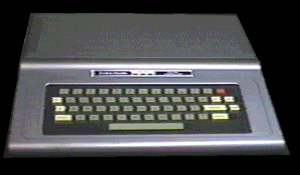
The original TRS-80 Color Computer was introduced in 1980 and featured 4 KB of RAM and Color BASIC. All could be upgraded to Extended Color BASIC, and later versions supported up to 64 KB of RAM.
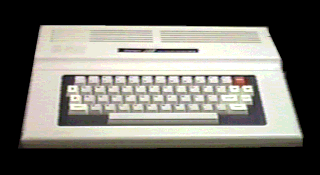
The TRS-80/Tandy Color Computer 2, introduced in 1983, was basically a refinement of the original CoCo (with a more efficient power supply, higher integration/lower parts count, smaller case, and lower manufacturing cost). The CoCo 2 shipped in 16 KB and 64 KB RAM configurations. Incidentally, the shift from Radio Shack's use of the TRS-80 name to the Tandy name on their computers occurred during the production of the CoCo 2, so they can be found with either name.
For detailed information about the CoCo 2, check out my new CoCo 2 Model Summary. Note that the CoCo 2 is almost identical functionally to the original CoCo. For this reason, much of the information on that page is pertinent to the original CoCo as well.
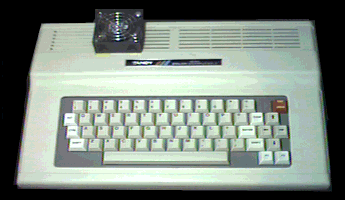
The Tandy Color Computer 3, introduced in 1986, incorporated a number of very significant improvements over the previous models. The original clock speed of 0.895 MHz (actually 1/4 of the NTSC colorburst frequency of 3.579545 MHz) was doubled to 1.7 MHz (with the CPU appropriately changed to a 68B09E). A new video/memory-management chip, the GIME, was also added. This permitted a much larger memory area to be used (128 KB RAM stock, 512 KB was available from Radio Shack, and 1- and 2-megabyte upgrades have been performed by some users). Note that the fan in the picture is not original; I advocate adding forced-air cooling to all manner of electronic equipment. :)
Every CoCo 3 shipped with 128 KB of RAM and Super Extended Color BASIC, and there are no ROM version differences (as there were with previous models). The only significant known variation among samples of the CoCo 3 is the presence of an 'old' (1986) or 'new' (1987) GIME chip. The later version incorporates some bug fixes. The first CoCo 3s were made in Korea, but production of later units returned to the USA. Apparently, the presence of an old GIME coincides with the Korean units.
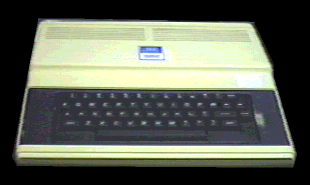
The TDP System 100 was basically a repackaged, late-model original CoCo sold through department stores. It was equipped with 64 KB of RAM and Extended Color BASIC. The keyboard on this particular machine is not original.
The 64K Color Computer was virtually the same machine as the TDP-100 (a late-model original CoCo with 64 KB of RAM and Extended BASIC). It was packaged in a white version of the original CoCo case. Introduced at roughly the same time as the CoCo 2, it was the first machine for which OS-9 Level 1 was targeted.
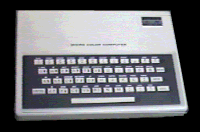
The MC-10 Micro Color Computer was a physically small, sort-of-compatible MC6803-based entry-level CoCo available around 1984.
There were quite a few versions of most of the CoCo models; I may add a more detailed listing of more of them to this page. Plans are in the works also to add pictures (internal as well as external) of more of the machines in my CoCo collection.
My CoCo Floppy Drive Info Page contains information about various floppy diskette controllers and drives made for, as well as compatible with, the Color Computer.
While the CoCo is not comparable to most of today's personal computers in capability (especially ultra-high-performance platforms such as the Amiga), it is far from unusable. For example, I programmed a CoCo 2 to act as a dedicated controller for a Christmas-light display. The CoCo is the first computer platform I had the opportunity to get 'serious' about...upgrading, interfacing, programming...some of which today's computer newbies never get to experience. The CoCo was one of those machines you could actually REPAIR...not just swap motherboards or other cards, but actually replace COMPONENTS. For example, I've repaired several CoCo floppy controllers, simply by replacing a few chips (the 7416 buffers, actually). All of that has been lost with the advent of close-spaced pins on surface-mounted chips on multi-layer PC boards (unless you have a $10K soldering station with a microscope!). If it is not apparent by now, I am a certified 'hardware hacker' (or is that certifiable?). The CoCo is, without question, my favorite 8-bit platform.
The CoCo is also the first platform I used for telecommunications, 'back in the day' when BBSs were king. My setup consisted of a 64 KB Extended BASIC CoCo 2, a cassette recorder, a 300 bps direct-connect modem, and a 19" black-and-white tube-type TV set for a monitor. Believe it or not, it was fun to use that system! It took about a minute just to load the terminal program from tape. BTW, the first terminal program I used did not even have a capture buffer. I actually recorded the CoCo's video output on a VCR to capture text for later viewing!
On the subject of cassette storage, the CoCo is capable of being connected to any standard audio cassette deck. The quality and performance of such recorders, however, vary considerably. By far the best cassette recorder that I have ever found for computer use is the Tandy CCR-82. It is considerably smaller than most standard or 'computer' tape decks, and uses 4 'AA' cells. The CCR-82's internal mechanism is constructed almost entirely of metal, not the less-rugged plastic used in many units. It also features a switch to defeat the remote control input and a switch and LEDs to allow monitoring of record and playback audio, even with a plug inserted in the earphone jack. These features totally eliminate the ever-present need to insert and remove the earphone and remote plugs. Note that, despite the CCR-82's possession of an AUX input jack, I have found that excellent reliability results from plugging the computer's record output into the microphone jack instead.
The Amiga computer was the most logical 'upgrade path' available when I progressed beyond using the CoCo for the majority of my computing needs. This is due, in part, to the fact that the two systems share a number of interesting characteristics. These serve also to set both systems apart from most of the 'mainstream' platforms. Some of these similarities are:
-CPU clock and system timing based on television colorburst frequency
-Generation of television-compatible video output
-Absence of specific 'video RAM'
-Use of a Motorola microprocessor
-Fast, efficient performance from small programs
-Capable of multitasking
-Sound and graphics capabilities beyond those of competing systems
-True DAC-based audio output as a standard feature
-Support for four floppy disk drives simultaneously
-Stock RS-232 serial port capable of operating at the MIDI baud rate
-A pair of dedicated, non-serial joystick/mouse inputs
-Both are just generally fun machines :)
Want to run CoCo programs on another platform? Check out the Dragon & Tandy CoCo Emulator Home Page.
Would you believe that smoothly-scrolling, Amiga-style demos and a MOD player are available for the CoCo 3? Probably the most impressive CoCo programs ever written, these (and other fine software, information, and links) may be found on Sock Master's CoCo Home Page.
Larry Greenfield has some great info and pictures of CoCos (and other interesting 8-bit machines, such as the Fujitsu FM-7) available on Larry's Home Page.
Watch this space for additional CoCo-related links. Yes, there really are other CoCo enthusiasts out there! :)
Last updated: 16 December 1998